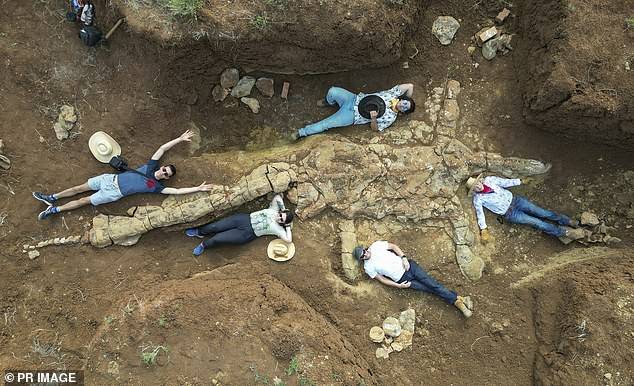
Fossil hunters unearth incredible ‘Rosetta Stone’ skeleton of a dinosaur that roamed Australia’s vast inland sea 100million years ago
Three amateur palaeontologists have discovered the remains of a 100-million-year-old long-necked marine reptile at an outback Queensland station.
In an Australian first, the complete skeleton of an ancient plesiosaur, or extinct marine reptile, was discovered at a sprawling remote property in the McKinlay region.
The rare fossil was discovered by a station owner, Cassandra, alongside fellow amateur fossil sleuths Sally and Cynthia, known as the ‘Rock Chicks’.
The discovery has been described as the Rosetta Stone of marine reptile palaeontology, a reference to the ancient carved stone discovered in Egypt in 1799 and considered to hold the key to deciphering Egyptian hieroglyphics.
A team of museum palaeontologists travelled to the remote site to collect the fossil of the elasmosaur, a plesiosaur that lived alongside the dinosaurs.
The Elasmosaurus lived in the Eromanga Sea, which covered large parts of inland Australia between 140 and 100million years ago.
The recovery was led by Queensland Museum Network Senior Scientist Dr Espen Knutsen, who said the remains were the first known head and body of an Australian elasmosaur to be held in a museum collection.
A team of museum palaeontologists travelled to the remote site to collect the fossil of the elasmosaur, a plesiosaur that lived alongside the dinosaurs


